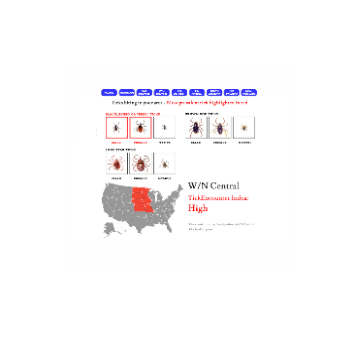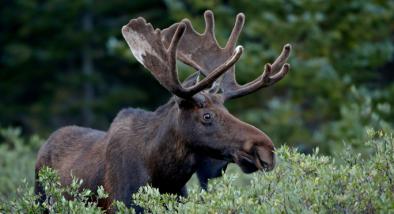Science Source
Fine-scale temperature patterns in the southern boreal forest: implications for the cold-adapted moose
- States North American moose (Alces aloes) respond to warm temperatures through changes in physiology and behavior
- States moose can reduce heat load by selecting for cooler conditions when variation exists across time and space in a given environment
- Invetigates moose "operative temperature" (as opposed to the environment's "ambient temperature"); operative temperature is an approximation of the convective and radiant heat transfer on the surface of an animal, making it a useful measure to interpret the thermal environment experienced by animals
- Records operative temperatures throughout the Kabetogama Peninsula of Voyageurs National Park, Minnesota for 1 year to describe seasonal patterns in the thermal environment available to moose and identify physical and landscape characteristics that affect operative temperatures in southern boreal forests (Voyageurs National Park (VNP) is situated on the southern limit of North American moose range, along the Minnesota-Ontario border)
- Looks at a set of operative temperature predictors that varied by season and time of day, including: vegetation cover type, canopy cover, and slope/aspect
- Finds vegetation cover type influenced operative temperatures during summer and fall afternoons with additional variation during summer afternoons explained by percent canopy cover
- Finds slope/aspect was the main driver of operative temperature during winter and spring afternoons
- Finds slope position was not a significant predictor of temperature, likely because of low topographic relief in the study area
- Finds operative temperatures were significantly warmer in open versus closed habitats during the day with the pattern reversed at night
- Results can be used to test if moose display a behavioral response to operative temperatures at various spatial and temporal scales
Related Content
Real Time Data

Mar 29, 2016 | Tick Encounter Resource Center, University of Rhode Island
Current US Tick Activity
Headline

Mar 29, 2016 | onearth
What’s Killing Minnesota’s Moose?
Science Source
| National Wildlife Federation
Wildlife in a Warming World
Science Source
| Parasitology Research
Seroprevalence, isolation, first genetic characterization of Toxoplasma gondii, and possible congenital transmission in wild moose from Minnesota, USA
Shiv K. Verma, Michelle Carstensen, Rafael Calero-Bernal et al


